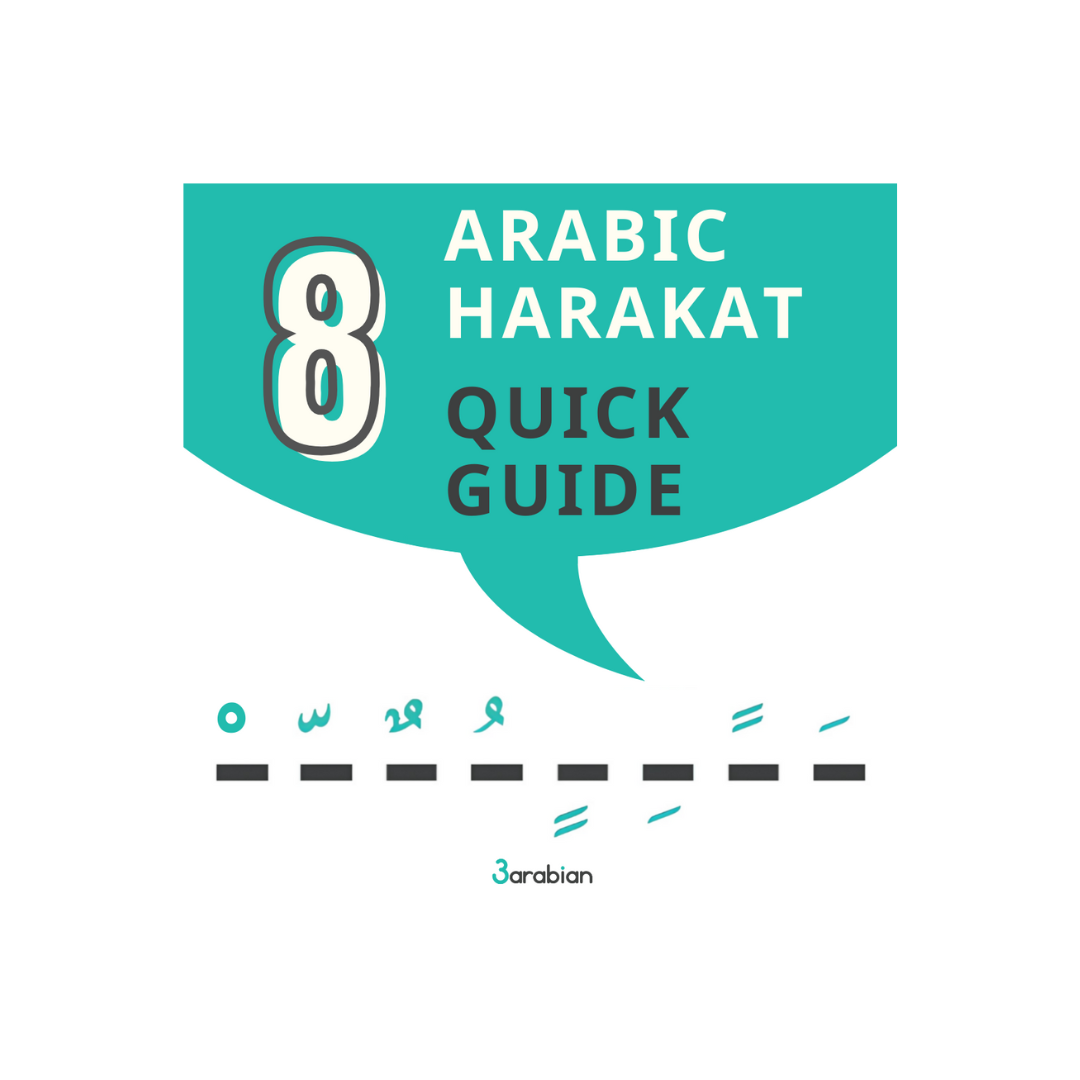Harakat in Arabic, a Quick Guide
Arabic Harakat: Origin & Types 🔠
You often hear that one of Arabic’s most distinctive features compared to other languages is its word modifiers called “Harakat”, which is like the final boss of Arabic. The beautiful thing about Harakat is that they can completely change the meaning of one word depending on how they are used, as you will see later in a few minutes.
In this blog post, I will talk about the origin of Harakat, explain how 8 of them work with words, and give a few examples that will clarify their importance in the language.
The Origin of Harakat
It goes way back to the 9th-10th century when Ali ibn Abi Talib commissioned Abu al-Aswad al-Du’ali to create the system of Harakat to help people read the Holy Quran (Islamic Religious book) correctly and pronounce the words in a certain unified way.
It was then evolved with Al-Farahidi’s system during the 11th century to make reading easier. His system is the one used in Arabic today!
We will use the letter د (D) as an example to showcase the 8 Harakat on it.
1. Fat-ha / فتحة
(Da) دَ
It gives letters the sound of the short vowel ‘a’ and is written as a dash above the letters.
Examples:
Ate → Akala / أَكَلَ
Ordered → Talaba / طَلَبَ
2. Tanween Al-Fateh / تنوين الفتح
(Dan) دً
It gives letters the sound ‘an’ and is written as two dashes above the letters, and it’s always used at the end of the word when it’s needed.
Examples:
Thanks → Shokran / شكرًا
A Life → Hayatan / حياةً
A House → Baytan / بيتًا
Also, all types of Tanween work only on Nouns and Adjectives, and they don’t work with words that start with Al / ال
Example: The Sea → Al-Baher / البحر
3. Kasra / كسرة
(Dee) دِ
It gives letters the sound of the short vowels ‘e’ or ‘i’ and is written as a dash below the letters.
Example: Book → Kitab / كِتاب
4. Tanween Al-Kaser / تنوين الكسر
(Den) دٍ
It gives letters the sound ‘en’ and is written as two dashes below the letters.
Example: Library → Maktabaten / مكتبةٍ
Just like Tanween Al-Fateh, it works only on Nouns and Adjectives, is written at the end of the word, and doesn't work with words that start with Al / ال
5. Damma / ضمّة
(Do) دُ
It gives letters the sound of the short vowels ‘o’ or ‘u’ and is written as a knot above the letters.
Example: Apple → Tuffaha / تُفاحة
When used at the beginning of a past tense verb, it changes the word's meaning and makes it past participle!
For example, Akala / أَكل means “Ate”, while Oukila / أُكل means “Was eaten” by someone or something.
6. Tanween Al-Damm / تنوين الضمّ
(Don) دٌ
It gives letters the sound ‘on’ and is written above the letters as either: Two knots, or 1 knot with a hook at the end of it (as shown in the image).
Example: Butterfly → Fara-shaton / فراشةٌ
Just like all Tanween, again, it works only on Nouns and Adjectives, is written at the end of the word, and doesn't work with words that start with Al / ال
7. Shadda / شدّة
(dddd) دّ
You’ve guessed it right, it’s used on letters to add stress and is written as a ‘w’ above the letters.
Examples:
Prepared → Haddara / حضّر
United Arab Emirates → Al-Imarat Al-Arabiyya Al-Mottahida / الإمارات العربيّة المتّحدة
8. Sukoon / سُكون
(d) دْ
Sukoon literally means “Stillness” or “Quiet”, and so in this case, it’s used on letters as an indicator of the absence of vowels or Harakat and is written as a circle above the letters.
Examples:
Student (Male) → Tilmeeth (th as in the) / تلْميذ
Future → Mustakbal / مسْتقْبلْ
Keep in mind that most Harakat can be used anywhere on words, depending on several grammatical factors. Using all 8 Harakat from the examples above:
Shokran / شُكْرًا Kitab / كِتابْ Maktabaten / مَكْتَبَةٍ Fara-shaton / فَراشَةٌ Haddara / حَضَّرَ Mustakbal / مُسْتَقْبَلْ
Note
Harakat are much more used in Modern Standard Arabic (MSA) compared to Arabic Dialects. So, this is why learning to speak Arabic Dialects is simpler than learning Standard Arabic.
Recommendation!
We highly recommend that Arabic learners check out our tailored One-to-One classes that offer Arabic lessons on different speaking/writing levels using fun and simple teaching methods! 🤩











